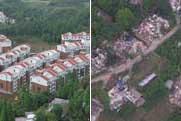China
Democratic Reform a historic stride for social system in Tibet: scholar
Under serfdom, however, Tibetan serfs could not enjoy the economic achievements in Tibet, which were made with the financial assistance by the central government, the article says.
The Buddhist monks, aristocrats and the local government were frightened by the bulging demand of the Tibetan people for carrying out the reform.
In 1955, a preparatory committee of the Tibet Autonomous Region was set up, with the Dalai Lama as the chairman and the Banqen Lama as a vice chairman. In the same year, some Tibetan aristocrats began plotting for armed rebellions.
Beginning in 1957, some Tibetan people were organized to lay siege to government organizations, kill government staff workers, and hold armed rebellions. In 1958, a large number of rebellious armed forces were set up in Tibet.
On Mar. 10, 1959, an all-around armed rebellion was launched by the local government of Tibet and the stubborn upper-class forces, and the Dalai Lama went into exile, in betrayal of the nation and the Tibetan people.
The Tibetan hierarchical ruling forces headed by the Dalai Lama held the 1959 armed rebellion - an attempt to safeguard the feudalist serfdom and their fundamental interests, oppose all kinds of changes in Tibet, and seek for "Tibetan independence", according to the article.



